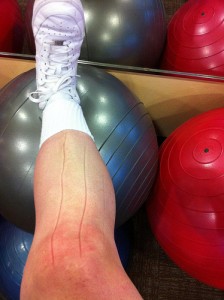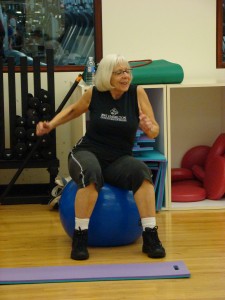by Michelle Sutton-Kerchner
The actions you take following a stroke can have a lifelong impact. Know the vital warning signs and how to respond, both immediately and for recovery …
Irregular blood flow to the brain, either through bleeding or blockage, causes a stroke to occur. Mere minutes of lacking essential nutrients and oxygen kills brain cells. This process may continue for several hours. Hence, the need for emergency treatment. Getting treatment within the first 60 minutes can prevent disability. Know when to act fast:
Symptoms
- Sudden weakness or numbness in face (facial paralysis), arm, or leg, especially on one side of the body
- Loss of speech, trouble talking or understanding speech, confusion
- Sudden dimness, blurring, or loss of vision, particularly in one eye
- Sudden, severe headache with no apparent cause
- Unexplained dizziness, unsteadiness, loss of balance (a sudden fall) or coordination
Get immediate medical assistance when such symptoms occur. This helps minimize damage. Bystanders should call 911 at the first sign of stroke
Ischemic strokes, the most common type, can be treated with a drug (called t-PA) that dissolves blood clots obstructing blood flow to the brain. Approximately 80 percent of strokes are ischemic.
According to the National Institute of Neurological Disorders and Stroke, treatment must be started within three hours to be successful. However, evaluation should be done within the first 60 minutes so treatment may begin. A five-year study by the National Institute of Neurological Disorders and Stroke found some patients treated within three hours of the stroke’s onset were at least 30 percent more likely to recover with little or no disability after three months.
Hemorrhagic strokes, responsible for only about 20 percent of events, is caused by a broken blood vessel that bleeds into the brain.
The Aftermath
Although sometimes called a “brain attack,” a stroke actually affects the entire body. The effects can be mild to severe and include: paralysis, cognitive issues, impaired speech, memory loss, trouble swallowing, impulsiveness, and emotional struggles. Pain or numbness is sometimes present after a stroke, as well. Typically, a stroke occurs on either the right or left side of the brain, with the opposite side of the body affected.
Recovering from a stroke is an individualized process, depending on the stroke’s severity and treatment success. Health experts who specialize in disabilities and recovery suggest working one-on-one with a recovery team, which usually includes speech, physical, and occupational therapists. They attest individualized exercise instruction promptly after a stroke can result in the best recovery. At the appropriate time, a stroke victim can benefit from one of the Center’s personal trainers who is skilled in rehabilitation. Customized exercises can assist in gaining mobility and confidence.
Encourage Movement
Exercise can take on new meaning for a stroke victim. By definition, exercise is anything that causes one to physically exert themselves for a healthy outcome. When recovering from a stroke, physical exertion (or exercise) might be the simple task of lifting an arm or extending a leg.
Exercise for stroke recovery should focus on these aspects:
Range-of-Motion: Immediately following a stroke, a person can struggle with voluntary control over the affected side of the body. Passively moving body parts through available range-of-motion (ROM) keeps muscles flexible and prevents joints from stiffening. This movement is critical to prevent painful, counterproductive aches and pains during rehabilitation and beyond.
As ability to move is restored, actively moving body parts through ROM can begin to strengthen the affected limbs. This active ROM movement helps regain strength. These exercises can be performed with another’s assistance, with the help of a cane for support, and by relying on the unaffected limbs. A personal trainer can recommend how to utilize the unaffected limbs without causing muscular imbalance and long-term issues.
Once ROM is restored at every joint without assistance, slowly add resistance. Resistance bands and free weights are often used. Their portability makes them ideal for therapeutic continuation at the Center. Gentle manual resistance from a fitness professional can also be implemented to advance progress made in physical therapy.

Balance and Stability: Control of one’s trunk may be lost during a stroke. Sitting alone could require support from cushions and pillows. Standing and walking could also be jeopardized from lack of balance. To recover some independence, even when stationary, the trunk needs to regain strength. Accomplish this through utilizing props, such as exercise balls, canes, parallel bars, and walkers.
As progress is gained, gentle yoga movements or Pilates can be effectively introduced to improve balance and coordination.
Coordination Exercises: Following a stroke, movement may be awkward at best. To gain fluidity, exercises should target coordination of the affected limbs. A common exercise involves crossing feet at the ankles, then running the heel of the affected leg up the opposite shin and lowering it down again.
Stroke recovery is typically a lengthy process, ranging from weeks to years. As with any rehabilitation, good and bad days should be expected. If you’re a caregiver, benefit from the advice offered in the F&W News article “Be a Healthy Caregiver” (July 20, 2011) at www.fitnessandwellnessnews.com.
Risk Factors
Often, the same factors that increase your risk for a stroke can also increase your risk for a heart attack.
- Being overweight or obese
- Sedentary lifestyle
- Family history of heart disease or stroke
- Being age 55+
- Cigarette smoking or exposure to secondhand smoke
- High blood pressure
- Diabetes
- Cardiovascular disease
- Use of birth control pills or hormone therapy that includes estrogen
- Use of recreational drugs or excessive alcohol consumption
Regardless of your predisposition, a healthy lifestyle is always recommended. Physical activity and nutritious eating protects against multiple conditions associated with aging and poor health. Ensure your best life with an investment in your health.
Prevention

Case-controlled studies prove that moderate to intense exercise can reduce the risk of stroke by up to 64 percent. According to the American Stroke Association, “Being inactive, obese, or both can increase your risk of high blood pressure, high blood cholesterol, diabetes, heart disease. and stroke.”
Research indicates older adults who exercise regularly are less likely to suffer a silent stroke. A silent stroke can indicate an increased risk for a full-blown stroke. Although this predisposition shouldn’t be ignored, by nature, a silent stroke goes unnoticed with its subtle memory loss and mobility issues.
Silent strokes should not be confused with mini strokes, which are noticeable but more brief in duration.
In a new study by Columbia University and the University of Miami, older adults who regularly participated in moderate to heavy exercise, such as jogging, cycling, and swimming, were 40 percent less likely to have suffered a silent stroke than their sedentary counterparts.
Be in “The Know”
Know the signs and how to react quickly. Immediate treatment can have a profound impact, as can rapid implementation of a rehabilitation plan. Create a timeline. Everyone progresses at their own pace, so keep the timeline dateless. Use it only to indicate next-steps. Then, invoke the support of family, friends, healthcare professionals, and the Center’s fitness and wellness team to execute that plan.
Sources
The American Stroke Association at www.strokeassociation.org.
“Best Exercises for Stoke Recovery,” by Lori Batcheller at www.disaboom.com.
“Exercise May Protect Against ‘Silent Stoke’,” by Marissa Cevallos at www.latimes.com.
“Know Stroke. Know the Signs. Act in Time,” National Institute of Neurological Disorders and Stroke at www.ninds/nih.gov.
“Stroke: First Aid” at www.mayoclinic.com.
Image Credits
Brain glow (introductory photo): www.flickr.com/photos/dierkschaefer/2961565820/
Exercise ball: www.flickr.com/photos/ontask/5674281791/
 Fitness & Wellness News Your Source for Fitness News, Wellness News, Health News, and Nutrition News!
Fitness & Wellness News Your Source for Fitness News, Wellness News, Health News, and Nutrition News!



